Pragmatic Planning: Scott and Marge Hayes & AFF’s Seedling Society
Scott Hayes loves spending time in the forest. He’s been working in and around them, both professionally and personally, all his adult life. He understands the importance of woodlands in preserving wildlife habitat and mitigating the impact of climate change. AFF’s planned giving program — the Seedling Society — has provided Scott with the opportunity to specify how a portion of his own forest acreage will be used, after his death, to fund programs that protect and preserve woodlands into the future.
Scott didn’t grow up in a forest-owning family. His father worked in the oil industry, and he spent his early years in Odessa, Texas.
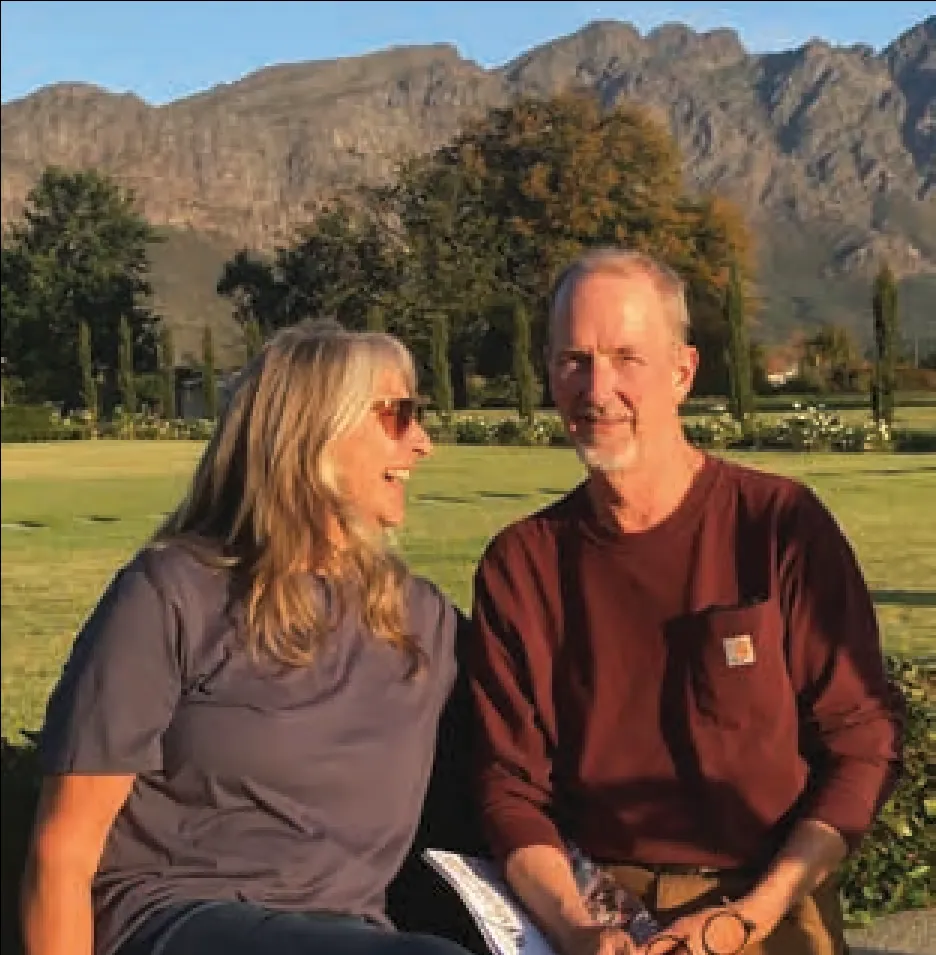
Scott and Marge Hayes sit together at dusk in front of a mountainous backdrop.
The family then moved to Oklahoma in time for Scott to start junior high school. This is where he learned to love the outdoors during his years as a Boy Scout. “We also visited Oregon almost every summer, since my dad lived in Newport as a child and we had a lot of extended family there,” he said.
After graduating from high school, Hayes attended Oregon State University in Corvallis, where he earned a Bachelor of Science in forest management in 1974. He then joined the Oregon Department of Forestry, where his role as a service forester in southern Oregon was to assist private forest owners with the management of their properties. During this time, Scott met his wife, Marge, who was working as a fire dispatcher. The couple lived and worked in Central Point for a time. Later, they moved to Salem where Marge was able to attend Oregon State University and earn her degree in textiles. In 1995, while Marge was working for Nike, they had the opportunity to live in Singapore. During their three years abroad, Hayes took a leave of absence from his forestry role.
Forest Owners
The Hayes family had looked for forest land before they went overseas but hadn’t found the right property. When they returned to the U.S., however, “we were actually lucky enough to find our perfect forest — 40 acres near Forest Grove,” said Hayes. Forest Grove is about 30 miles west of Portland in the foothills of the Coast Range mountains. Oregon has unique land use planning that strictly limits what forest owners can build on their property. “You can build a house on your forest land under certain conditions, and we were lucky that the land we bought included a building permit,” continued Hayes. They built their house on the property and began living there in 1999. The forest itself hadn’t been managed for many years and was originally part of a homestead (owned by a man named Timmerman) beginning in 1888.
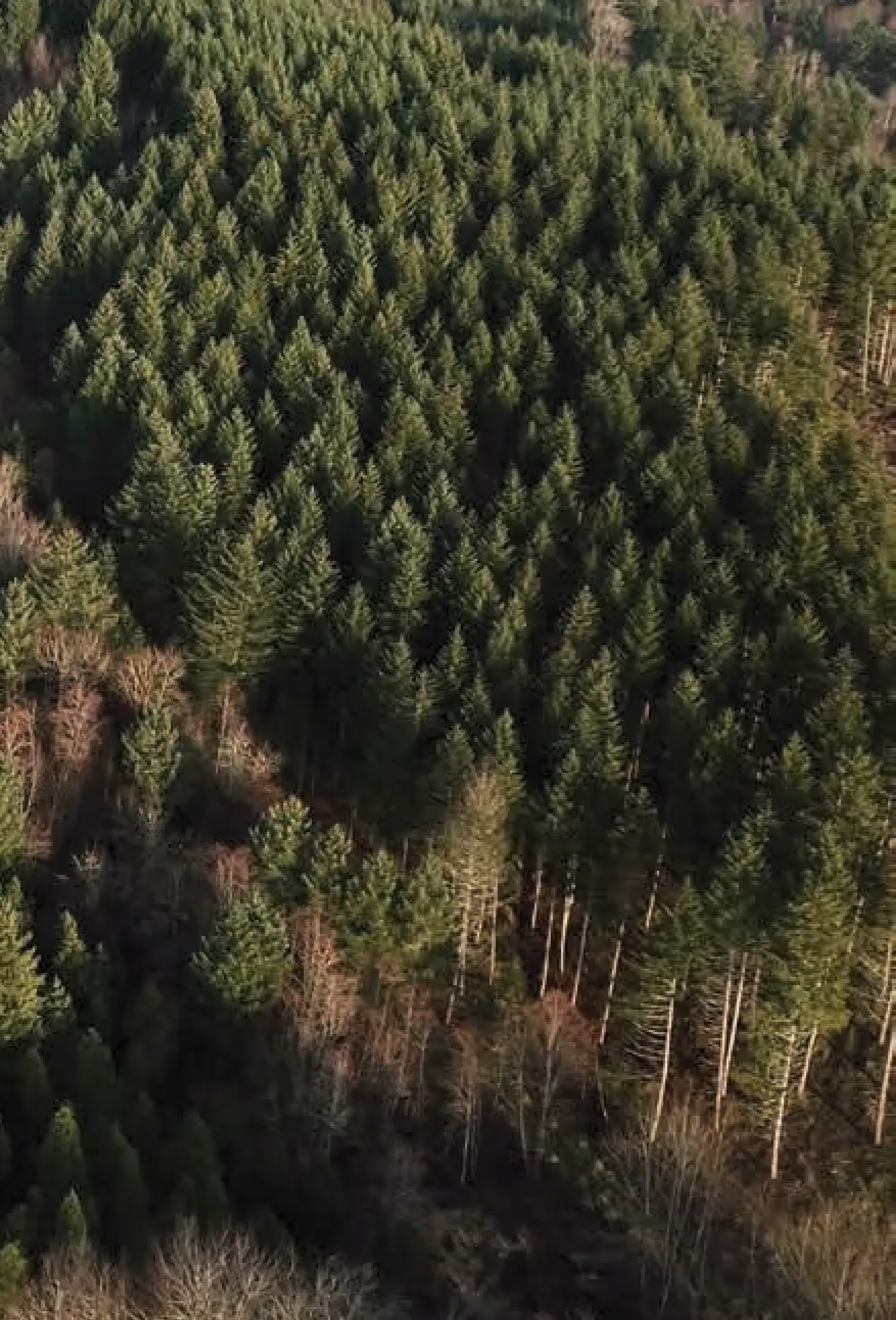
Arbor House Tree Farm located in Northwest Oregon
Timmerman farmed the property, growing hay and raising livestock. The homestead was later divided, and the Boyd family purchased 80 acres. “Instead of farming it, Mr. Boyd planted Christmas trees. But he later let the Christmas trees grow wild. So, when we bought the northern 40 acres, there were 20-to 25-year-old Christmas trees, too close together, on half of it. The other half had been heavily logged,” Hayes said. “So, one of our goals, even before we got the property, was to put it under the American Tree Farm System,” he added. “For the first ten years we worked in the forest in the evenings and almost every weekend. It was just a love of the land. Our goal was to increase forest diversity and to improve the wildlife habitat.” Scott and Marge have spent even more time working on the property since they both retired in 2005. The Hayes also actively manage the property to produce periodic income. Since purchasing the property, they’ve harvested about 250,000 board feet of Douglas fir.
Following their ATFS certified management plan, they thin the trees on the property to focus on structural diversity and to create patch openings. They have replanted some areas in a variety of hardwoods, including alder, maple, and western red cedar. They actively manage chokecherry, cascara, hazelnut, and Pacific Madrone, which are very good species that provide food for small mammals and birds, especially band-tailed pigeons, which are native to the Pacific Northwest.
Oregon’s climate is very conducive to good tree growth, with plentiful rain in the winter and dry months during the summer. “But we have seen some climate change impacts; we had an acre of Douglas fir that suddenly died about five years ago due to drought,” We were able to salvage the fir and then converted the land to Oregon white oak under a grant from the Natural Resource Conservation Service,” Hayes said. “We actively work with NRCS under a conservation stewardship plan. Over the past ten years we’ve received cost-share funding for several different projects on our property,” he added. They are currently thinning a nine-acre, 60-year-old Douglas fir stand to create shelterwood and structural diversity, plus they’ve agreed to manage 28 acres for carbon storage under a NRCS program.
AFF Involvement
Despite his land’s ATFS certification, Hayes didn’t become active with AFF until 2008. “Our neighbors, Richard and Anne Hanschu, were Western Regional Tree Farmers of the Year, and they hosted the 2008 National Tree Farm Convention Field Tour. I helped with the logistics and met Tree Farmers from all over the country. It was a great time,” said Hayes. The Hayes enjoyed that experience so much that they attended the 2010 convention in Vermont. Hayes welcomed the opportunity to learn about how tree farmers in that part of the country operate. He also learned about the issues they face. During that meeting, they met Salem and Dianne Saloom.
In 2011, Dianne Saloom chaired AFF’s National Public Affairs Committee and recruited Scott as a member. He was very active on that committee for several years, and in 2015 he was asked to become a member of the Woodland Operating Committee. Over time, he served as both vice-chair and chair of the committee. These leadership roles allowed him to serve on AFF’s Board of Trustees. “It was eye-opening and a lot of fun, because from 2015 on, with former President and CEO Tom Martin’s guidance, AFF re-focused their vision and mission. The American Tree Farm System was the flagship program, but the board challenged all private landowners to accomplish real on the ground conservation practices,” Hayes said. Fast forwarding seven years, he is excited about the Family Forest Carbon Program and the climate work that AFF is now doing under the current President and CEO, Rita Hite.
If you or someone you know owns 30+ acres of woodland and could benefit from the guaranteed annual income, forest management plan and forestry expertise provided by the Family Forest Carbon Program, please see https://www.familyforestcarbon.org/.
Pragmatic Planning
Scott has just recently turned 70 and he hopes to have many more years to care for his land. But, being a pragmatist, he has thought carefully about what will happen to the woodlands beyond that time. Scott and Marge have no children, but they do have several nieces and nephews who have enjoyed spending time in the forest. But, those relatives they live far away and wouldn’t be able to maintain the property. Hayes notes that many older landowners today are facing the same scenario, with no children or relatives who want to take over the management of their property. “Looking ahead and thinking about what will become of our property in the future is important to us,” Hayes said. “My dad’s advice about property and money was, ‘I’ve never seen a hearse with a luggage rack, so get things in order before you die.’” In earlier iterations of their wills, the Hayes had planned on giving the land to the Oregon State University Foundation. “But that became problematic, because the value of the land and the house have increased dramatically,” Hayes said.
When they heard about the Seedling Society, the couple decided it was a good way to support AFF’s many critical initiatives. After their deaths, their executor will sell the land and home, with proceeds added to the estate. Half of the estate is bequeathed to Scott and Marge’s extended families; the balance is given to several non-profit organizations whose causes they support. One such organization is a Forest Grove art gallery cooperative where Marge, an encaustic artist, volunteers her time. Together they decided to contribute 10% of their estate to The Seedling Society. Hayes said the process of making the donation to the Seedling Society went smoothly, as AFF was able to supply the necessary donation language. Salem Saloom said that the Hayes’ gift reflects their commitment to woodlands and to AFF.
Scott and Marge have given their time, talent and treasures to the American Forest Foundation. They have gone above and beyond being supportive in their committee work on the Woodland Operating Committee, the National Policy Advisory Committee, and Scott as a representative on the AFF Board. They have been engaged in special projects over the years, Saloom said. “Their generous gift to the Seedling Society speaks of their commitment and enthusiasm for the future for AFF and future generations. Their labors in stewarding their Oregon Tree Farm have been a testament to their commitment to conservation and preserving family forests to remain as forests. “We know our gift will help AFF fulfill its mission into the future,” said Hayes. AFF is a great organization dedicated to helping private forest landowners become better stewards of America’s woodlands.”
Related Articles
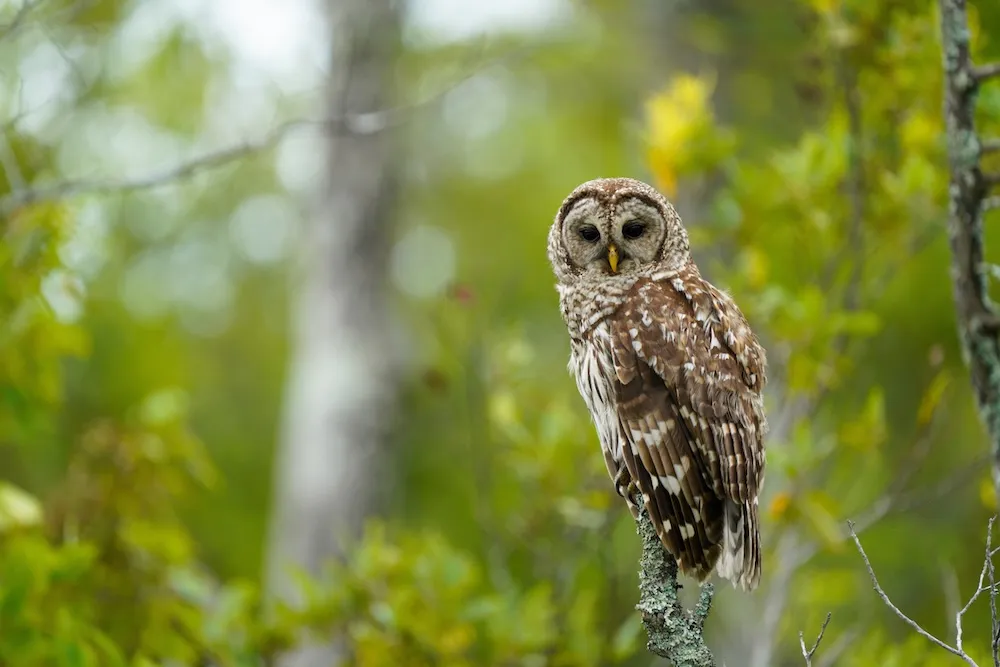
December 18, 2025
Improving Wildlife Habitat with the Family Forest Carbon Program
For many landowners, spotting a fox, songbird, or other wildlife on their property is one of the highlights of spending time on their land. In this post we look at some examples of management practices you may see in your FFCP forest management plan and how they help create the ideal conditions for certain wildlife species.
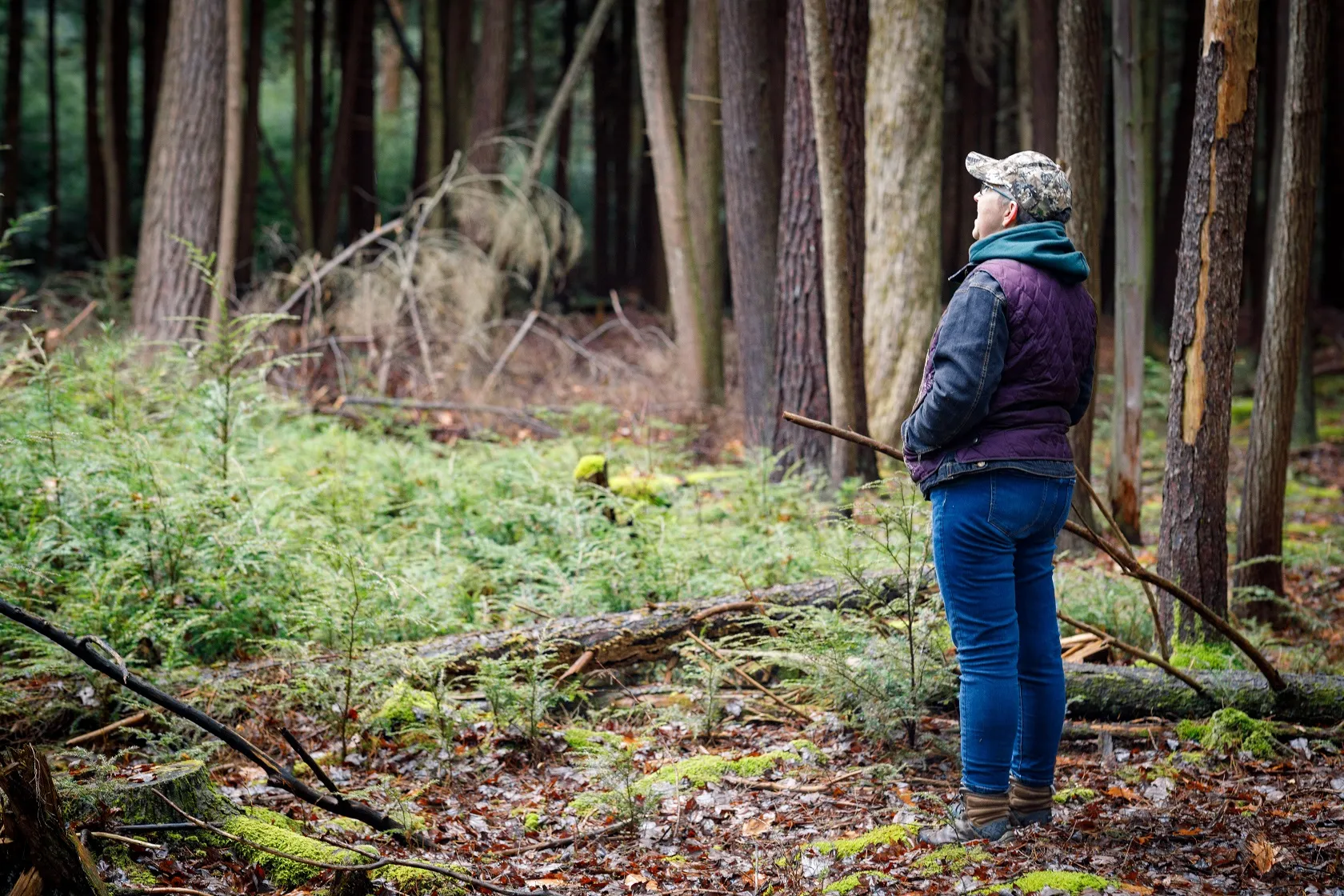
December 16, 2025
Family Forest Carbon Program's First Ever Credits Delivered to REI Co-op
Today, REI becomes the first buyer to receive carbon credits from the Family Forest Carbon Program (FFCP), a high-integrity forest carbon project designed for small-acreage landowners.
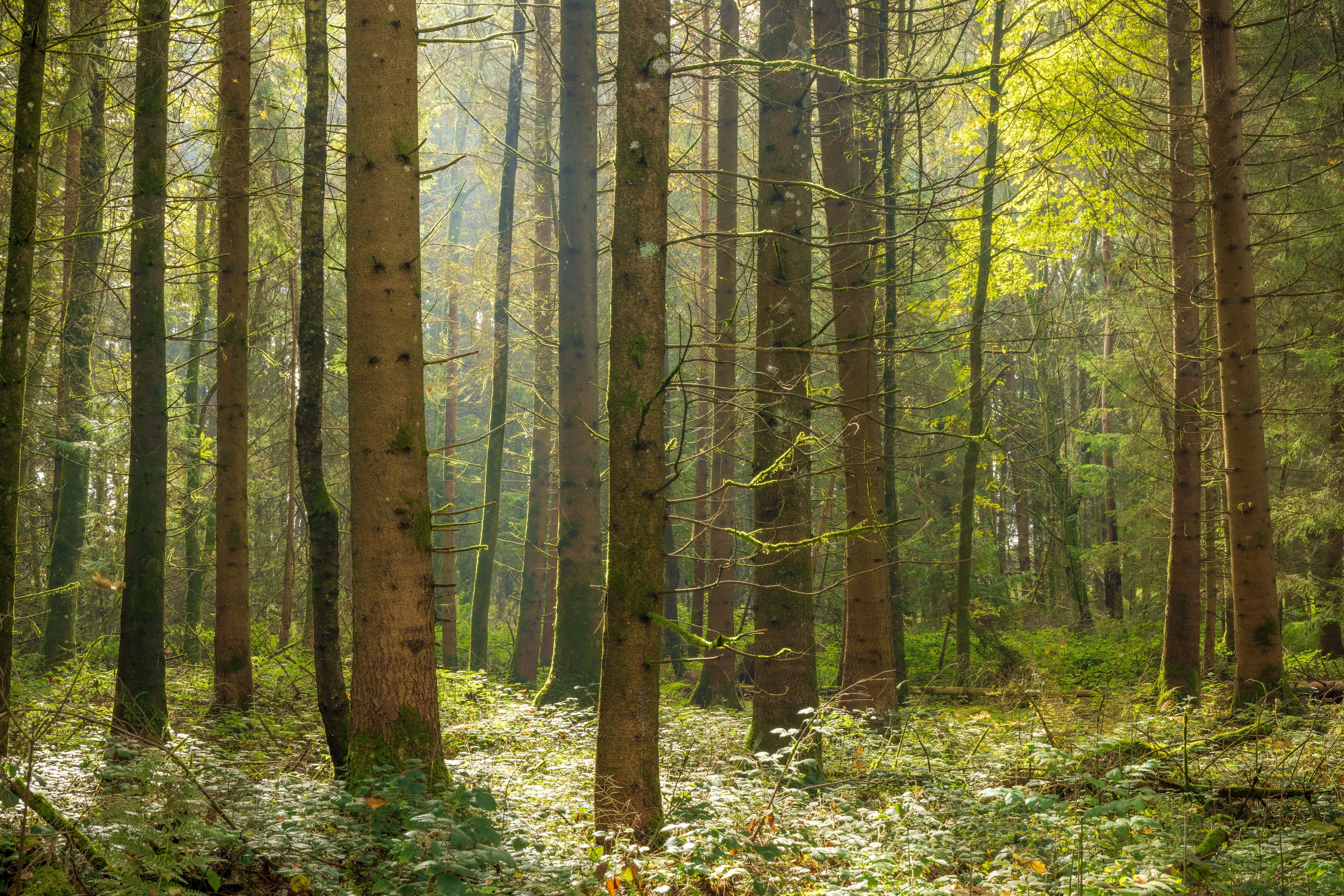
December 4, 2025
Forest Carbon Project Issued First Ever Credits
Conservation organizations the American Forest Foundation (AFF) and The Nature Conservancy (TNC) announced today the issuance of improved forest management (IFM) carbon credits to the Family Forest Carbon Program (FFCP) from standards setter Verra under its Verified Carbon Standard (VCS) Program. This marks the first issuance of credits produced using Verra’s VM0045 improved forest management (IFM) methodology, which was co-developed by Verra, AFF, TNC, and TerraCarbon.